Kashmir shikara: The floating verses on sounds of water…
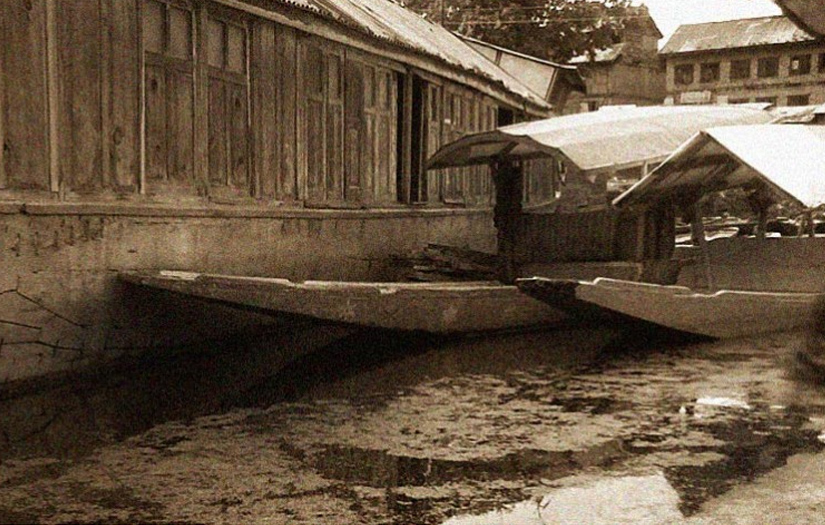
If Kashmir is fondly regarded as the paradise on earth then Srinagar has to be the ultimate abode for all things angelic. One of its heavenly offerings is the Shikhara or the wooden house boat used for ferrying visitors across the lakes and rivers. As an ever dynamic cultural identity of Kashmir, the shikhara is as popular among tourists who come for sightseeing as it is for local vending of fruits, vegetable and flowers, for fishing and for harvesting aquatic vegetation.

Kashmir shikara Craft
Kashmir as it appears from the ancient Hindu texts, was a lake until sage Kashyapa drained it and land surfaced. And perhaps it is hence known as Kashmir or desiccated land (in Sanskrit “ka” stands for water and “shimeera” means to desiccate). This holy matrimony of land and water becomes further apparent as one surveys the 12th century literature of Rajatranjini authored by Kalhana. According to these scripts the great sage Kashyapa (grandson of Brahma) pierced fissures in the hills of varaha-mula (popularly known as Baramulla) to allow all the water to bleed away. He thus rendered the land habitable for the Brahmans who settled here to become the greatest scholars, poets and creators of masterpieces in Sanskrit Literature.
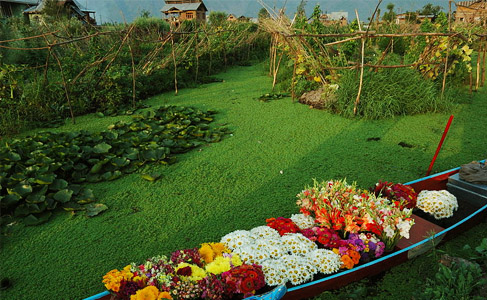
Another interesting piece of history establishes the alliance between the Shikhara and India’s colonial past where English settlers who could not buy themselves land in the valley, had boats like these named after them, which becomes evident as one comes across boats named “H.B Duke Wells”, “Silver Street” and others even today.
Shikhara is small paddled taxi boat often about 15 feet long and made of wood obtained from deodar trees, growing in the vicinity of the Dal Lake. With a colorful canopy and a spade shape bottom it is no ordinary boat. In its relentless pursuit of being a lifeline for everyday chores, the Shikhara has almost left the trail of a legend by stirring the souls of numerous poets through history who fell for its awe-inspiring gait.
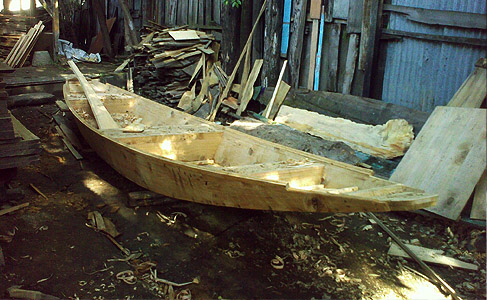
The ingenious craft relies on deodar wood, which inherently does not decompose in water and remains sturdy throughout. The unprocessed logs of wood are reduced to slippers of a varying 25 feet to 41 feet length and further divided int three parts. The pointed front end known as the zero point is followed by the central section made of 8 planks of wood and the boat eventually ends in a flat rear segment. Two planks of wood lend to each of the side elevations and account for a vertical height of 1.5 feet. The rear and the forward end are maintained by rectangular logs of wood, which guarantee that the framework remains in shape. Its conspicuous spade shaped base is unlike another water vehicle.

A longitudinal cut section of the boat reveals the presence of 5 beams or karis which are positioned equidistant from each other except the central ones. The beams at the extremities are 3”x5”while those towards the center are 5”x3”.
In order to avoid leakages through the structure, the nails and iron clamps used for joinery are flushed and fixed into the wood diagonally (i.e. never at right angles) and only when they are red hot, to ensure stronger bonding. As a matter of fact these custom made rust-proof nails are made longer than the ones generally used and care is taken to keep them hidden in the visual aesthetics of the boat. Cocking, where intermittent gaps and creeks in the wooden body are sealed using a paste (made of wool given away by poplar trees and indigenous weeds) further assures that water is kept at bay.

As the skeleton of the boat stands prepared, seating arrangements are organized in the central segment of the boat by positioning cushions and related upholstery over the built-in storage space underneath. The spatial quality is further enhanced by exquisite use of a canopy supported on four pillars. The centre and the ends are equipped with iron anchor rings and wooden pegs, which are used to fasten the shikara on the banks of the lake.
The shikaras are eventually painted in bright colors ensuring the palette captures the essence of the valley. When on sail they constantly remind one of a brush carrying shades of eternal spring even as the canvas embraces the hues of the changing seasons. Boats may further be polished, engraved, embellished and furnished with pieces of walnut furniture.
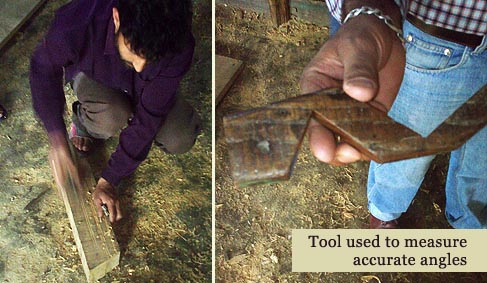
An impressive banquet of carpentry like this one may be prepared over 10 to 12 days. The boats are often navigated by two boat men draped in fhran (the traditional wear) and they carry kangris or portable heaters on the boat. A shikara can seat about 6 people and has heavily cushioned seats and back rests that take inspiration from the Mughal style of luxury.
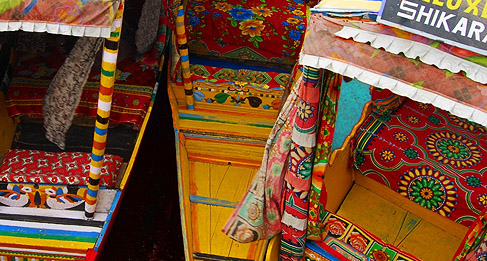
While casually meandering over waters of the Jhelum, the Skikhara unconsciously casts a spell as it converses with the caresses of the Kashmiri breeze. One journey on this modest piece of boat architecture embodied with opulent yet homely accommodation makes an interesting ride over the waters less travelled,hidden in the laps of mountains and the bosoms of the valleys. Besides, it is a sheer indulgence for the shopaholics who discover the rich art of this paradise while actually voyaging on one.
Documentation by~
Angad Chauhan

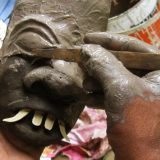
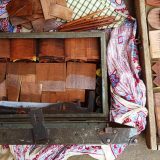
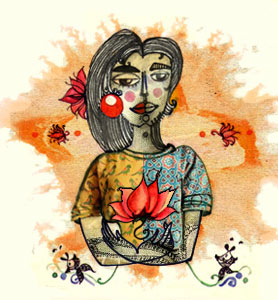
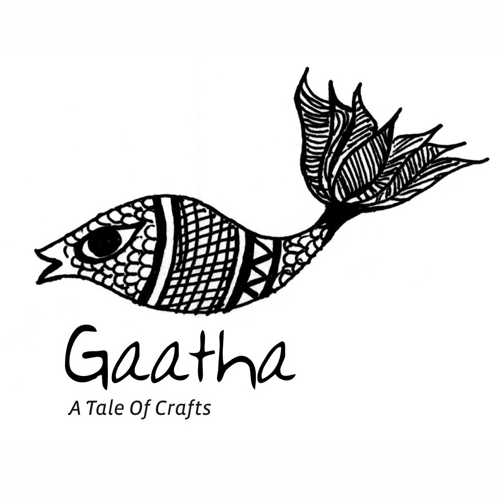


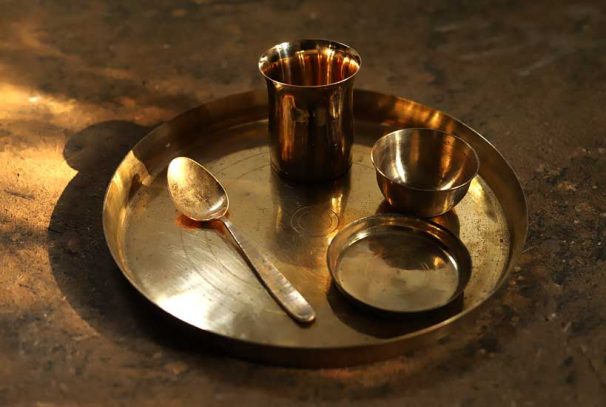
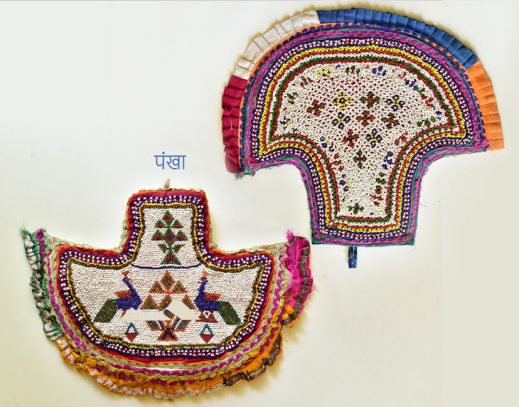
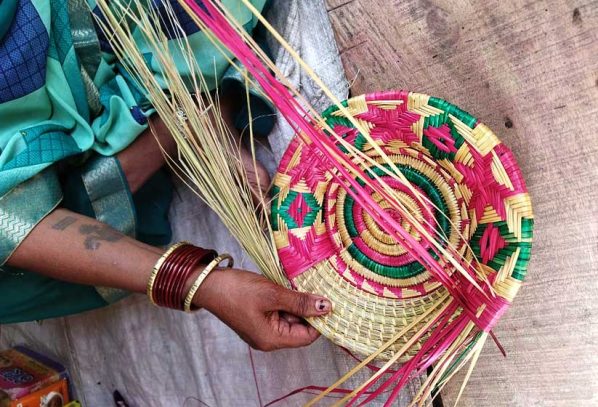

Samruddhi
Love your work. Keep it up!
VIneeth Mungath
You have mentioned the history of shikara boats in Kashmir, the making details i never found anywhere else. Shikara boats are available in Alleppey in Kerala as as well. But the experiences are different in both places even the boat sizes and shapes are also different. Thank you for mentioning the history and making details.
gaatha_home
We can also plan a post on Alleppey house boat 🙂